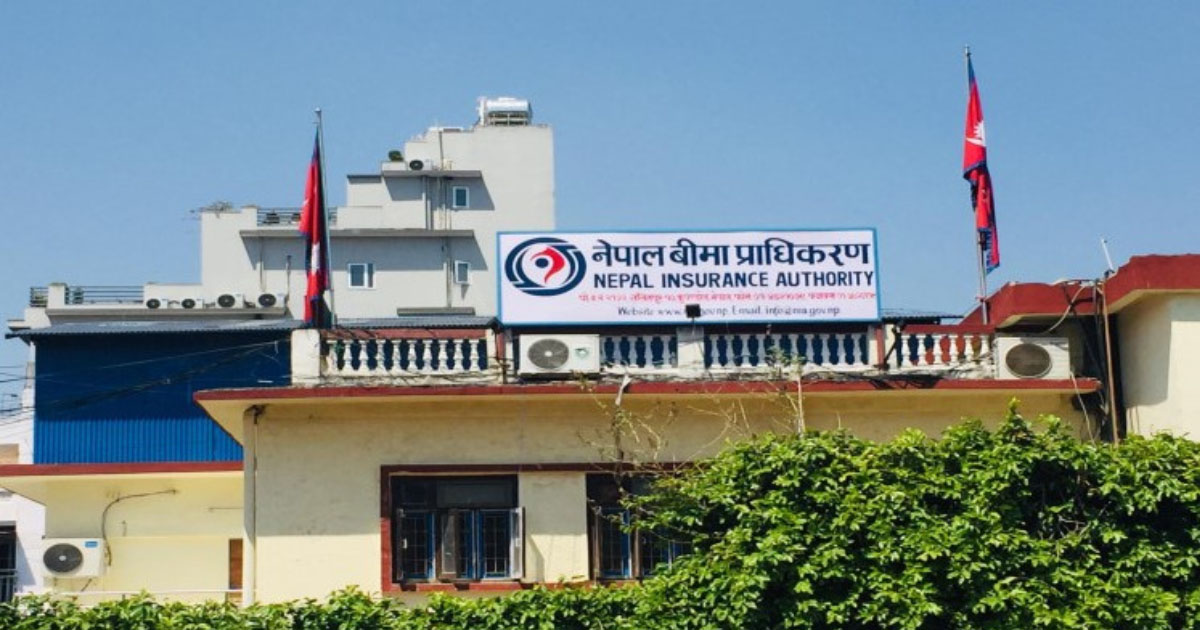After the Fall: Can Nepal Insurance Authority Regain its Purpose and Public Trust?

Editorial
For the Nepal Insurance Authority (NIA), the past seven months have been marked not by regulatory breakthroughs, but by turmoil. The nation’s apex insurance watchdog has seen two of its most senior leaders fall under scrutiny—one acquitted, the other suspended—and now stands cautiously under interim leadership. These events, unfolding one after another, have exposed not just the fragility of leadership selection but the deeper fissures within Nepal’s institutional governance.
It began in December 2024, when the Commission for the Investigation of Abuse of Authority (CIAA) filed a corruption case against then-NIA Chairman Surya Prasad Silwal. A respected bureaucrat and former Home Secretary, Silwal stood accused of submitting conflicting documents to manipulate his official age. The CIAA alleged that he had presented at least three separate birth dates—July 30, 1958, in service records; November 8, 1959, in his citizenship certificate; and November 9, 1961, in his diplomatic passport. The motive, prosecutors argued, was clear: to reduce his official age and extend his tenure beyond the constitutional retirement limit of 65.
The case shook the regulatory community. Silwal was automatically suspended from his post, and Madan Dahal, a joint secretary at the Ministry of Finance, was appointed acting chair. The public narrative swiftly turned from regulatory reform to institutional accountability. But on March 2, 2025, the Special Court delivered a verdict that many had anticipated but few felt resolved the deeper questions. Silwal was acquitted on the grounds of insufficient evidence, legally exonerated but politically and publicly bruised. Though his tenure had already concluded by then, the damage to public perception had been done.
Yet the vacuum did not last long. On February 24, 2025, just days before Silwal’s acquittal, the Council of Ministers appointed Sharad Ojha, a former journalist and media professional, as the new NIA chairman. Almost immediately, concerns emerged—not about his politics, but his paperwork. Multiple institutions named in his experience certificates denied having issued them. Allegations of forged managerial records quickly spread, prompting public backlash and pressure on the government to intervene.
Ojha’s fall was swift. Within a few months of assuming office, he was suspended pending investigation under Section 12(2) of the Insurance Act, 2079. The government constituted a three-member judicial committee led by retired Justice Krishna Giri to look into the allegations. What complicated matters further was the narrative circulating in both bureaucratic and media circles—that Ojha had begun probing powerful interests in the insurance industry, and that his ouster may have had more to do with the enemies he was making than the paperwork he submitted. Whether those suspicions hold weight remains to be seen; what is undeniable is that Ojha’s brief tenure—just four months and seventeen days—left the Authority in even deeper uncertainty. In the wake of these successive scandals, the Ministry of Finance appointed Sebantak Pokharel, a joint secretary, as acting chairman on July 15, 2025. His appointment came at a moment of fatigue and fragility—when public confidence in the NIA’s leadership was at a low, and the credibility of the institution itself was under question. Pokharel’s mandate, though temporary, carries the weight of a longer crisis. The Authority he now leads has been embarrassed twice, with its top brass embroiled in charges that go to the heart of ethical conduct and vetting failure.
In the wake of these successive scandals, the Ministry of Finance appointed Sebantak Pokharel, a joint secretary, as acting chairman on July 15, 2025. His appointment came at a moment of fatigue and fragility—when public confidence in the NIA’s leadership was at a low, and the credibility of the institution itself was under question. Pokharel’s mandate, though temporary, carries the weight of a longer crisis. The Authority he now leads has been embarrassed twice, with its top brass embroiled in charges that go to the heart of ethical conduct and vetting failure.
What emerges from these episodes is a stark portrait of institutional vulnerability. Both the Silwal and Ojha controversies reveal the absence of robust verification systems, the lack of transparent appointment procedures, and a broader tolerance for politicized selections. In an ideal regulatory framework, the leadership of a sector as vital as insurance would be unimpeachable—not just legally, but ethically and procedurally.
And that is where Pokharel’s task becomes urgent. The challenges before him are not only managerial but existential. How can a regulatory body retain its authority if its processes lack scrutiny? How can it police insurance misconduct when its leadership appointments are marred by ambiguity or manipulation?
As for the public, it deserves more than headlines and verdicts. It deserves faith that institutions meant to safeguard the nation’s financial backbone are themselves built on honesty, professionalism, and clarity. The next chapter for the Nepal Insurance Authority is still unwritten. But if it begins with silence and shortcuts, it will only end where the last two did—in disillusionment.
